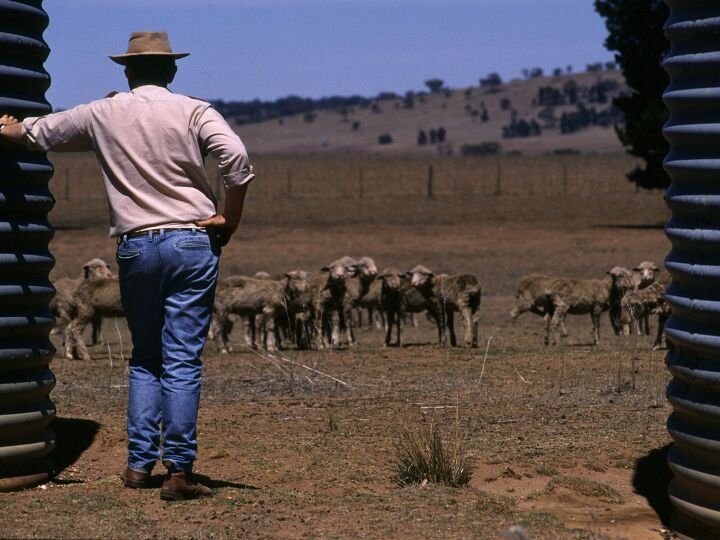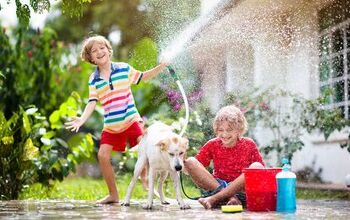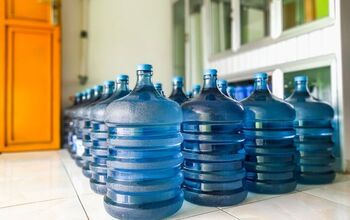How To Prepare For A Drought

A drought is a nightmare for homeowners and communities, especially when they aren’t prepared. Droughts can disrupt the ecosystem, harm animals, and kill your garden and lawn that you worked hard to grow. Understandably, many homeowners struggle with how to prepare for a drought.
To prepare for a drought, buy several cases of water and install a low-flow showerhead to minimize how much water you waste. Never pour out old water during a drought, and instead, collect it in a container to water your plants with. Set up a 55-gallon barrel to collect rainwater before a drought so you can use the reserve to water your lawn and garden until the drought is over.
It also helps to install mulch to improve water retention and infuse the soil with essential nutrients. Buy as much water as possible, as you will need 5-8 bottles per person in your family each day. Follow along as we highlight how to prepare for a drought.
How To Stay Safe During A Drought
1. Conserve Water
Think twice before you pour out that container of water. Every bit of water that you’d normally dump out could come in handy during a drought. This includes the dirty water in your dog’s bowl or the cup of water you left out overnight. Dedicate a container to hold old water that you would otherwise dump out.
You can use this dirty water to water your plants during the drought in a sustainable way. Of course, you won’t want to drink dirty water, but it could save your plants during a drought. This is especially useful if you don’t have access to a good hose connection or if you live in an area under drought restrictions.
2. Stock Up On Bottled Water
While drinking from the tap is more sustainable in the long term, you should drink as much bottled water as possible during a drought. Your tap water may get cut off during a drought if there is a state or nationwide emergency. In that instance, you will have no other option but to drink bottled water.
However, it may be too late to stock up on bottled water by the time the drought gets dire. In that case, you should buy as many cases of water as possible during the early stage of the drought. This can be expensive if you have a family, as each person needs at least 5-8 bottles of water per day, but it’s also necessary.
3. Maximize Efficiency
Efficiency is always important, but it is critical during a drought. Appliances and plumbing fixtures that use water, such as showerheads, can waste plenty of water when they aren’t in great shape. That’s why it’s important to inspect your pipes and showerheads before or during a drought.
Upgrade to a low-flow showerhead to reduce water waste. Not only will this reduce your water bill, but it will also reduce water waste for your community. Communities are encouraged to do as much as possible to conserve water during a drought, and tightening loose plumbing fixtures and installing low-flow showerheads are among the best ways to do so.
It also helps to turn off your sprinkler during a drought. Water your lawn as much as possible with your sprinkler before the drought, but shut it off once the drought sets in. After that, you will have to rely on alternatives such as rain barrels or using your water surplus to preserve your lawn.
4. Use Mulch
Install mulch before a drought to improve your soil’s water retention. Mulch can help retain as much water as possible to slowly drain it into the soil. It can also help keep the nutrients in the soil, which is essential when there is a drought.
Soil struggles to absorb nutrients when there isn’t enough water and mulch can keep the nutrients in place for longer. Mulch can also help protect the soil from prolonged sunlight, which can be damaging without water.
5. Set Up Rain Barrels
This precaution requires some foresight, but a rain barrel can help save your lawn and garden during a drought. Place 1-2 barrels that can hold up to 55 gallons of water in your yard. Over time, these barrels will fill with rainwater.
Once the drought hits, you can use this surplus to water your garden. Simply run a soaker hose from the barrel to your garden or through your lawn. This will hold you over for at least a few weeks during the drought, especially if you have multiple rain barrels.
Cover the rain barrel with a lid when you aren’t using it, so the water doesn’t evaporate. It’s too late to try this method if a drought has already started, however, so it’s important to set up rain barrels during times of heavy rain.
6. Keep Your Pets Inside
Keep your pets inside as much as possible during a drought. Droughts are often accompanied by extreme heat, which can be dangerous for animals. The water shortage also means that you will need to make careful use of the water that you typically give to your pets.
Your pets will quickly get thirsty when you leave them outside for a while during a drought. This can lead to dehydration and will cause them to drink more water than they typically would. Give your pets bottled water and keep them inside as much as possible to maintain a reasonable water consumption and protect them during a drought.
How Long Do Droughts Last?
Droughts typically last from a few weeks to a few months, but some droughts can last for years. It depends on the time of year and location. The longest drought in U.S. history was the Dust Bowl Drought that lasted from July 1928 to May 1942.
That drought lasted unusually long compared to the average drought, but the average drought duration has increased. Factors such as climate change have caused droughts to last longer. This also causes them to be more severe in terms of the accompanying heat typical during a drought.
In the U.S., droughts typically occur on the West Coast. Arizona, Nevada, California, and Utah are the states that are most prone to droughts.
How Do Farmers Prepare For A Drought?
Farmers use irrigation systems to prepare for a drought. They also take advantage of the timing of watering to ensure maximum absorption. This typically involves watering flowers early in the day before it gets too hot so the soil can retain plenty of water.
Farmers also make sure to prune dead leaves off of plants and pull weeds. Dead parts of plants waste water that could go to healthier parts of the plant. Weeds also waste water as they absorb water and nutrients that would otherwise help feed essential plants.
Farmers often use French drains, rain barrels, soaker hoses, and drip irrigation to provide as much water as possible during a drought. In extreme cases, farmers may need to consolidate their crops and eliminate some plants that are less essential to ensure they don’t waste water.
Summing It Up
The best way to prepare for a drought is to stock up on water bottles and conserve water. Never pour out old water during or before a drought, and instead, pour it into a container. You can use it to water your plants until the drought is over.
It also helps to put mulch in your garden as it retains water and nutrients during a drought. Set up rain barrels before a drought to catch as much rain as possible. After that, you can run a soaker hose from it to water your garden until the drought ends.
Related Guides

Nick Durante is a professional writer with a primary focus on home improvement. When he is not writing about home improvement or taking on projects around the house, he likes to read and create art. He is always looking towards the newest trends in home improvement.
More by Nick Durante












![10 Best Zero Turn Mowers – [2022 Reviews & Ultimate Buyer's Guide]](https://cdn-fastly.upgradedhome.com/media/2023/07/31/9070522/10-best-zero-turn-mowers-2022-reviews-ultimate-buyer-s-guide.jpg?size=350x220)














